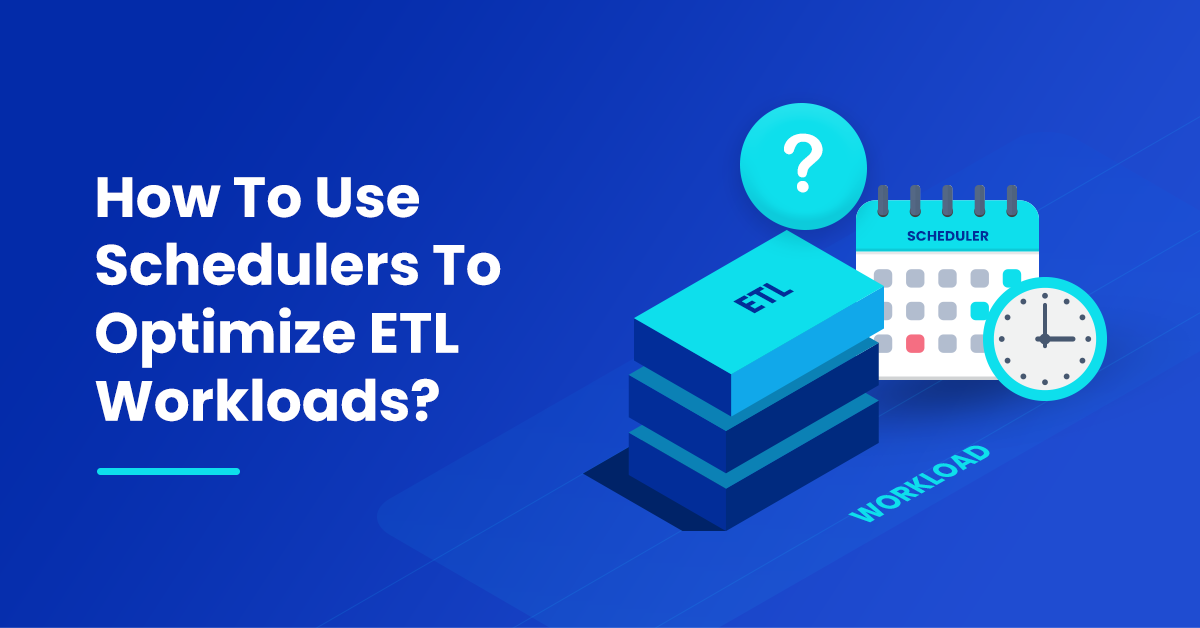In today’s data-driven world, organizations need to process, analyze, and derive insights from vast amounts of data quickly and efficiently. ETL (Extract, Transform, Load) is a critical process in data processing that involves extracting data from multiple sources, transforming it into a standard format, and loading it into a target database or data warehouse.
Running ETL workloads without a scheduler can be challenging, time-consuming, and prone to errors. However, with the help of a scheduler, organizations can optimize their ETL workflows and improve performance, scalability, and reliability. Thus, let’s dive into this blog to understand ETL Worloads, schedulers, and the implementation involved.
Understanding ETL Workloads And Schedulers!
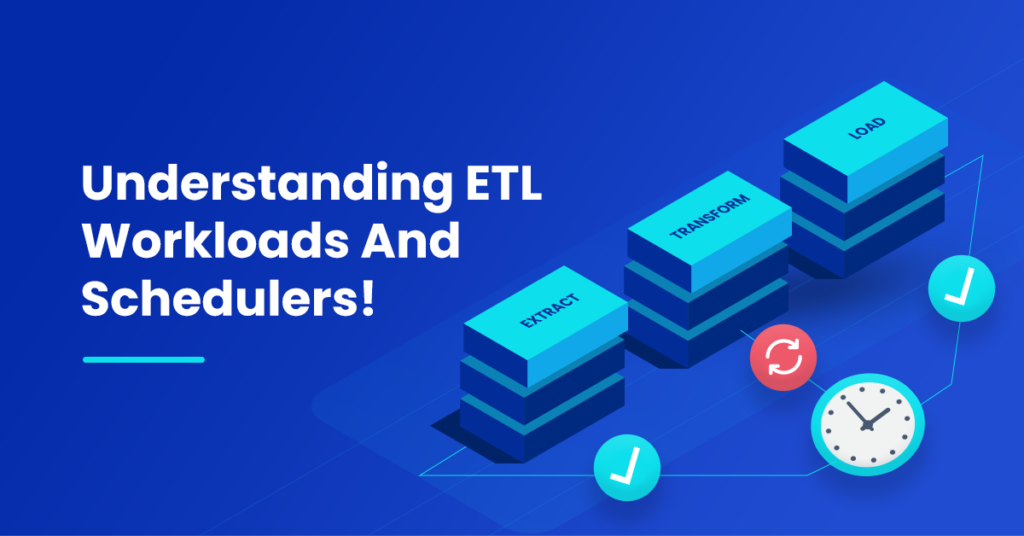
ETL workloads are complex, long-running workflows that involve multiple tasks, dependencies, and data sources. ETL workloads are processes that involve extracting data from one or more sources, transforming it into a different format, and loading it into a destination. These processes collect, store, clean, and analyze data.
ETL workloads can move data between systems, clean and transform data, or create reports. However, ETL workloads can be time-consuming and often require manual intervention and manual scheduling. They require a scheduler to manage these complexities and provide automation, monitoring, and error-handling capabilities.
A scheduler is a tool that enables automated scheduling and execution of tasks, jobs, or workflows. It helps manage and orchestrate complex workflows, dependencies, and scheduling requirements. There are two types of schedulers: traditional schedulers that run on-premise and cloud-based schedulers that run on cloud platforms like AWS, Azure, or GCP.
What Are The Benefits Of Using Scheduler For ETL Workloads?
Using a scheduler for ETL (Extract, Transform, Load) workloads offers several benefits, including:

- Improved performance: A scheduler can optimize the processing time of ETL workflows by distributing tasks across multiple servers and minimizing resource wastage.
- Scalability: A scheduler can scale ETL workflows horizontally or vertically based on demand without the need for manual intervention.
- Reliability: A scheduler can monitor ETL workflows, detect failures, and retry failed tasks automatically, reducing downtime and minimizing the risk of data loss.
- Time and cost savings: A scheduler can automate ETL workflows, reduce manual intervention, and minimize errors, resulting in significant time and cost savings.
- Automation: A scheduler can automate repetitive and time-consuming tasks, such as data extraction, transformation, and loading, freeing up resources to focus on more critical business tasks.
- Visibility: A scheduler can provide visibility into ETL workflows, enabling organizations to monitor and optimize performance, detect and resolve issues, and generate reports for compliance and auditing purposes.
Overall, using a scheduler for ETL workloads can help organizations optimize their data processing workflows, improve performance and scalability, and reduce costs and risks associated with manual intervention and errors.
How To Choose The Right Scheduler For ETL Workloads?
When choosing a scheduler for ETL workloads, organizations should consider the following factors:
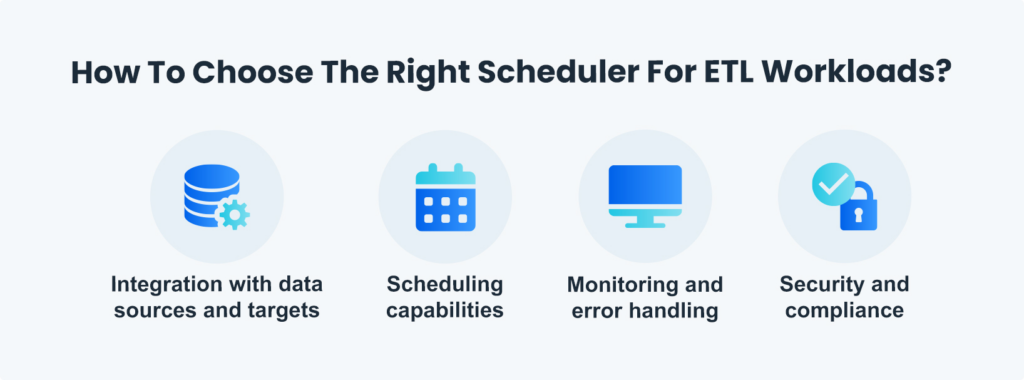
- Integration with data sources and targets: The Scheduler should integrate seamlessly with various data sources and targets, such as databases, data warehouses, cloud storage, etc.
- Scheduling capabilities: The Scheduler should support complex scheduling requirements, such as dependency management, job chaining, parallel processing, and event-based triggering.
- Monitoring and error handling: The Scheduler should provide monitoring and error handling capabilities to detect and resolve failures.
- Security and compliance: The Scheduler should comply with industry security standards and provide granular access control to sensitive data.
And the Scheduler that has all the features mentioned above? nOps, at the rescue!
How can nOps help with ETL Workloads?
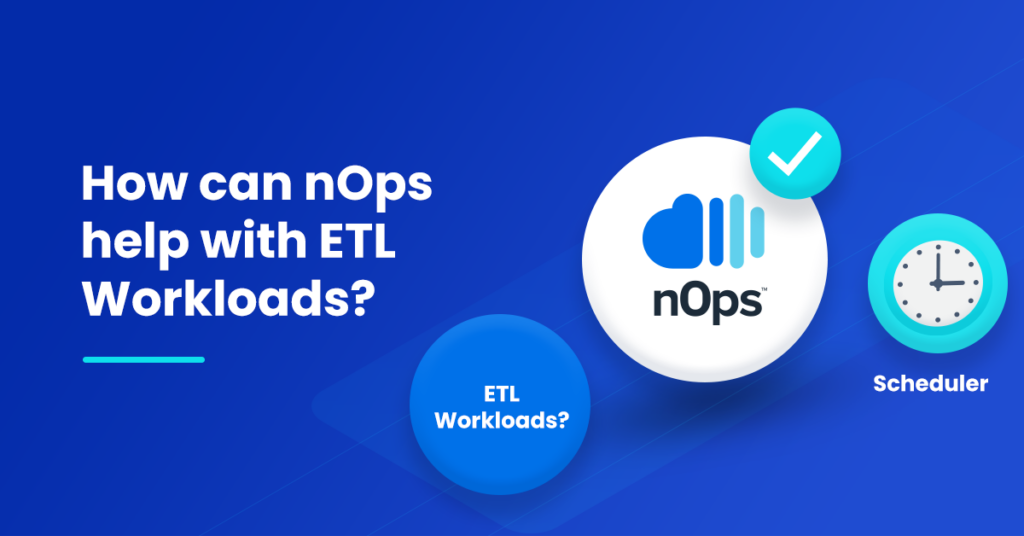
ETL workloads are an essential part of business intelligence and analytics. They enable organizations to extract, clean, consolidate and store data from multiple sources in a single, unified data warehouse. However, ETL workloads can be complex and resource-intensive. Here’s where nOps comes in!
nOps is a tool that helps users manage and monitor their cloud infrastructure. When it comes to ETL workloads, nOps can help in a couple of ways.
- Firstly, ETL workloads often involve processing and moving large amounts of data between different systems. nOps can help with this by providing insights into the performance and efficiency of your cloud resources. This can help you identify bottlenecks or issues that might slow down your ETL processes and optimize your infrastructure to ensure smooth and efficient data movement.
- Secondly, nOps can help with cost management for ETL workloads. ETL processes can be resource-intensive, which can lead to high cloud costs. nOps can help you track and manage your cloud spend by providing Showbacks. Showbacks are reports visually representing how much your resources are costing you, broken down by usage type, so you can identify areas where you can optimize your costs.
- Overall, nOps is a tool that helps users manage their cloud infrastructure, including ETL workloads. It can help you identify performance issues, optimize your resources for efficient data movement, and help you manage your costs by providing Showbacks. With nOps, you don’t have to download your CUR (Cost and Usage Reports) and face complications since we handle that for you!
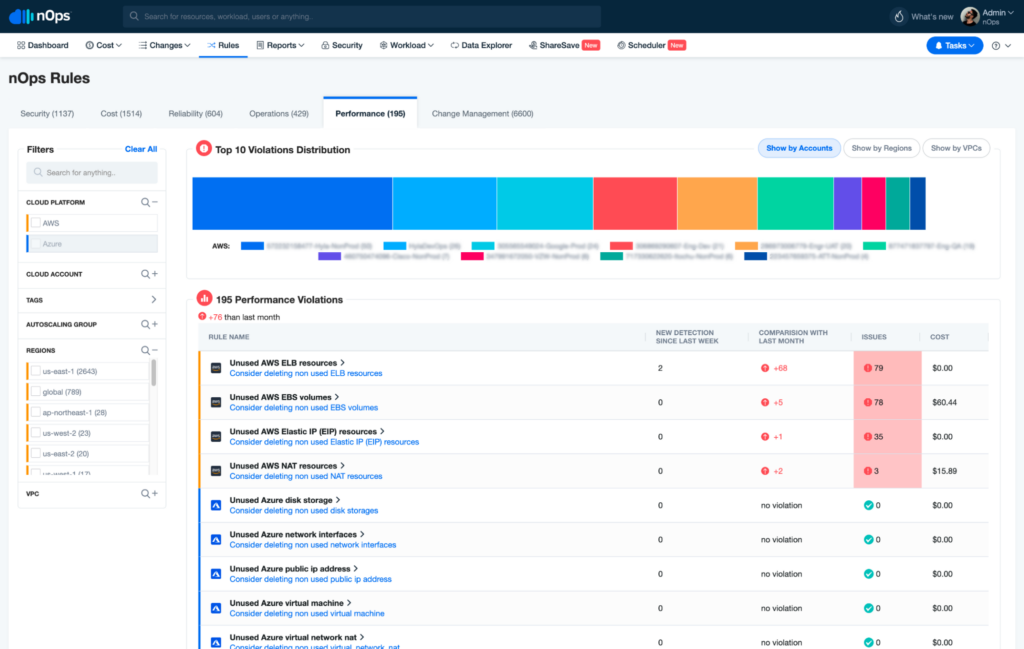
Your team focuses on innovation, while nOps runs optimization on auto-pilot to help you track, analyze and optimize accordingly! As a result, our customers can benefit in two key ways:
- First, pay less for what you use without the financial risk.
- Second, use less by automatically pausing idle resources.
Let us help you save! Sign up for nOps today.

